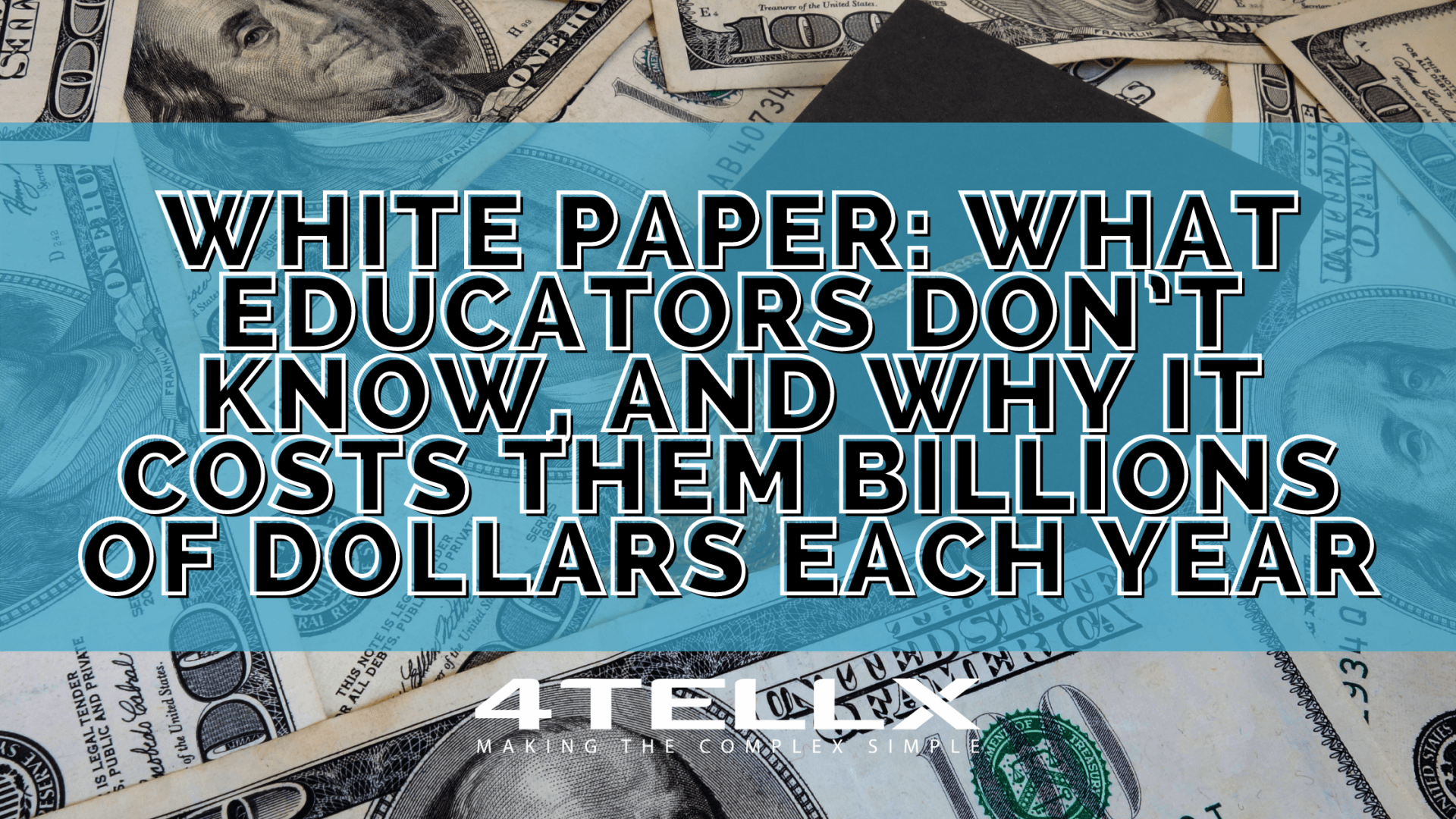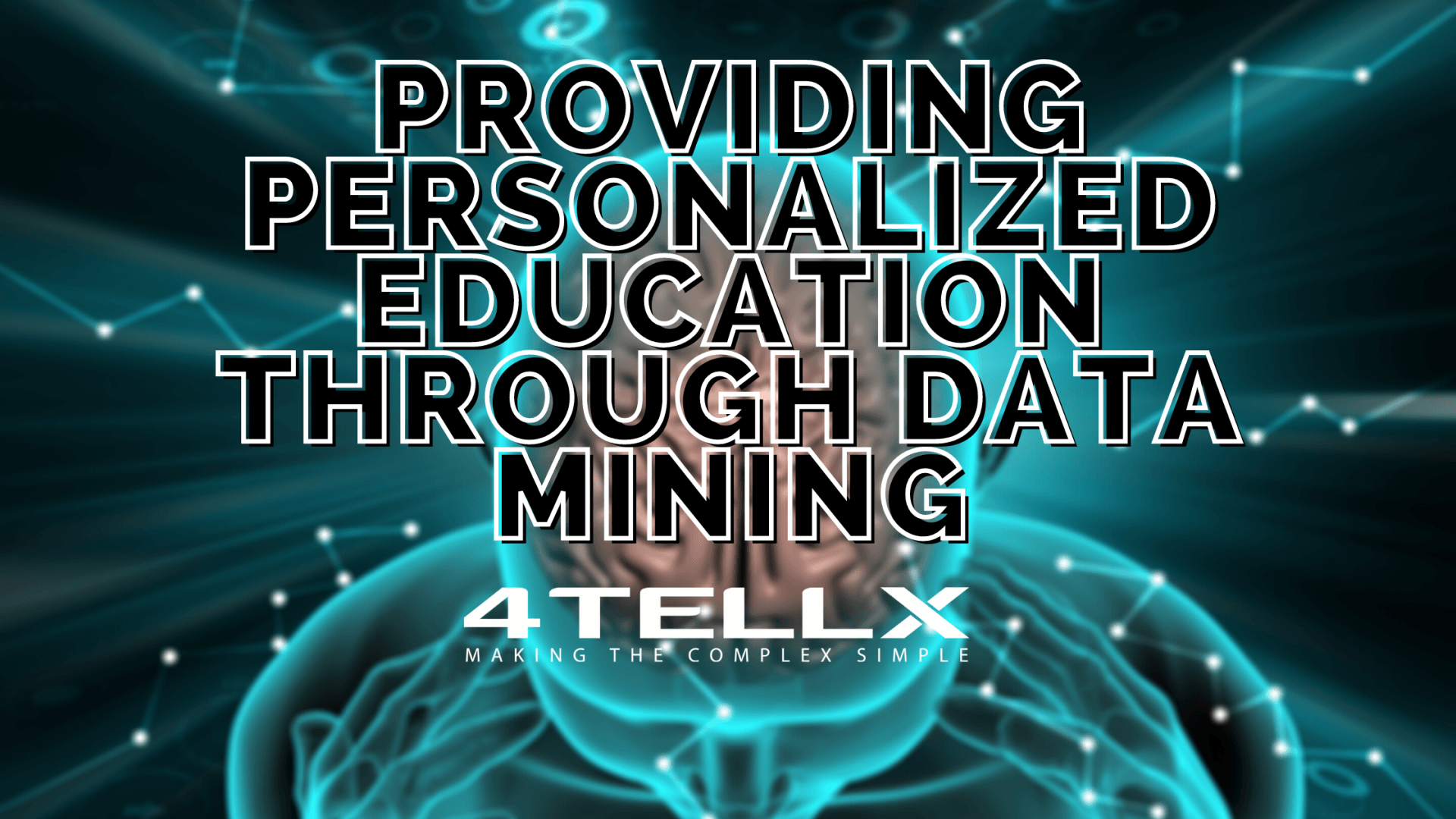Implement Interventions for Student Success During the Pandemic
The Pandemic Has Changed How Education Systems Implement Interventions.

COVID-19 has dropped a massive “wrench” on the efforts of school districts to boost student performance. The pandemic warped the normal techniques to the way teachers teach.
Schools district administrators across the country and all are asking two essential questions:
- How far are my students behind academically?
- What is the best way to catch them up?
Those are important questions to answer. And yet, the answer is not the same for every single child. Each child is different and they learn at different paces, different levels, and in different environments. 4TellX brings a new and innovative approach to data analytics to enable educators to be more precise than they have been in the past.
How? 4TellX simply processes more data than school districts are currently processing today. Analyzing hundreds of data indexes versus one or two data sets always produces more accurate predictions and reveals causal-level insights.
Data Models in Education
We frequently hear district administrators say, “We are data rich but information poor.”. Our scientific data models give educators the ability to move away from viewing their students in the aggregate. 4TellX allows educators to see them as individuals so they can diagnose the best pathway for each student and each teacher toward success.
It is the school districts’ responsibility to provide programs that prepare students to be successful in whatever future they choose for themselves. Educators teach modern skills so students can graduate and are prepared for their future. Through these skills can students compete well in the ever-changing world. Students must learn transferable skills. Yet, are students' needs being met? Is there a way educators can reach all students so that success is in their future? The answer is yes.
Schools begin collecting data for every student beginning when they first enter the school building as a five-year-old. This data consists of attendance, grades, test scores, formative assessments, and more. When schools use this data to inform decisions, it can change how teachers teach and how students learn. Ultimately, when students’ needs are targeted based on the available data, students learn, pass rates improve, and schools succeed.
What 4TellX has to offer.
4TellX offers districts, administrators, teachers, and counselors the necessary information to target students’ academic needs. In the classroom, teachers can use the information gleaned from big data to gear lessons towards students’ problem areas; therefore, students are more successful. Students can work through challenging concepts and still keep pace with the rest of the class because lesson plans are specific to their needs.
On a district and school level, an analytics solution to organizing data will help to inform instruction, allocate resources, create professional development, and identify learning gaps. At the classroom level, the teacher can focus on individual student learning by differentiating lesson plans and creating a program that meets the needs of each student.
When teachers, counselors, and students can make decisions based on data, they are more likely to create an individualized program that leads to success for each student. Graduation rates improve and students can move on to what they want their future to be. Schools not only want to increase graduation rates, but they also want to increase college and career readiness. Big data and predictive analysis will help to get students on this path to success.
Teachers want to help students. They teach lessons and try to break down the content into easily digestible parts so students can understand the concepts. However, as much as teachers try to break down content, there will always be students who need additional help. How do teachers reach these students? And, once these students are targeted, how do teachers know which interventions are working and which are not?
4TellX offers a solution to this problem. Through their easy-to-understand analytics, teachers and administrators can determine if students are improving, if interventions are working, and which students need more assistance. With the help of these analytics, there is no need for teachers or schools to continue with useless interventions. Students do not need to continue with an intervention that is not helping. 4TellX uses data to align programs that help students.
All schools and students must succeed. Children do not need to suffer from interventions that do not make a difference. 4TellX can help analyze interventions that work and guarantee that children are on the road to success. Time does not need to be wasted haggling and negotiating over which programs need to continue or what direction the school system must take. 4TellX offers historical data on all students, so the metrics do not need to be based on just the current year. It is time to stop negotiating about whether an intervention is helping our children; it can be measured and predicted so that our children experience success.
COVID-19 Education Stimulus Package
The December 2020 stimulus package was approved for $82 billion toward education. The bulk of the money allotted to stabilize K-12 schools and will go directly to school districts based on the proportion of funding they receive through Title I of the federal Every Student Succeeds Act.
Districts can essentially use it for any activity allowed under other federal laws for education, including those for students with disabilities and those who are homeless. These include:
- Improving coordination among state, local, tribal and other entities to slow the spread of Covid-1
- Providing resources that principals need to address coronavirus at their schools
- Supporting school district efforts to improve preparedness
- Addressing learning loss especially among disadvantaged students, including those living in poverty, learning English, experiencing homelessness, dealing with disabilities, or living in foster care
- Training staff on the best ways to sanitize schools and proper use of personal protective equipment (PPE)
- Purchasing PPE and the supplies needed to clean and disinfect schools. The CDC has provided an analysis of the costs of such resources.
- Planning for school closures
- Purchasing the hardware and software needed to conduct remote and hybrid learning
- Providing services to support student mental health
- Supporting afterschool and summer learning programs
- Using evidence-based approaches to address learning loss, which can include assessments and distance learning equipment
- Repairing school facilities, especially ventilation systems, to improve air quality and reduce the spread of Covid
At least 20 percent of the money provided in the American Rescue Plan must be spent to address lost learning. The law specially mentions the need to administer high-quality assessments to determine academic needs, implement evidence-based practices, support students and families in distance learning, track student attendance and engagement during remote instruction, and monitor student academic progress to identify students who need more help.
Too much money is being spent on interventions that show little to no improvement in students. Schools do not need to continue with useless interventions that do not help improve pass rates or graduation rates. With time schools can make progress by optimizing the 4TellX system and spending money on the initiatives that make a difference in students’ lives. Empirically-driven decisions through in-depth data analysis should drive all financial decisions. It does not need to be guesswork. Our children deserve our best efforts and that relies on the people who make the decisions to follow the data.
Overall
With additional COVID-19 funding, it is possible to implement successful intervention campaigns and ensure that students’ success is not affected by the pandemic. 4TellX delivers the data so that guesswork is no longer a part of the decision-making. The data demonstrate which programs are working and which programs need to be put aside. It also shows which teachers are making the most progress and which teachers need more help. The services of 4TellX explore the data for the success of both teachers and students. The answers are within the data, it just needs to be utilized with 4TellX. Contact us to learn more!






